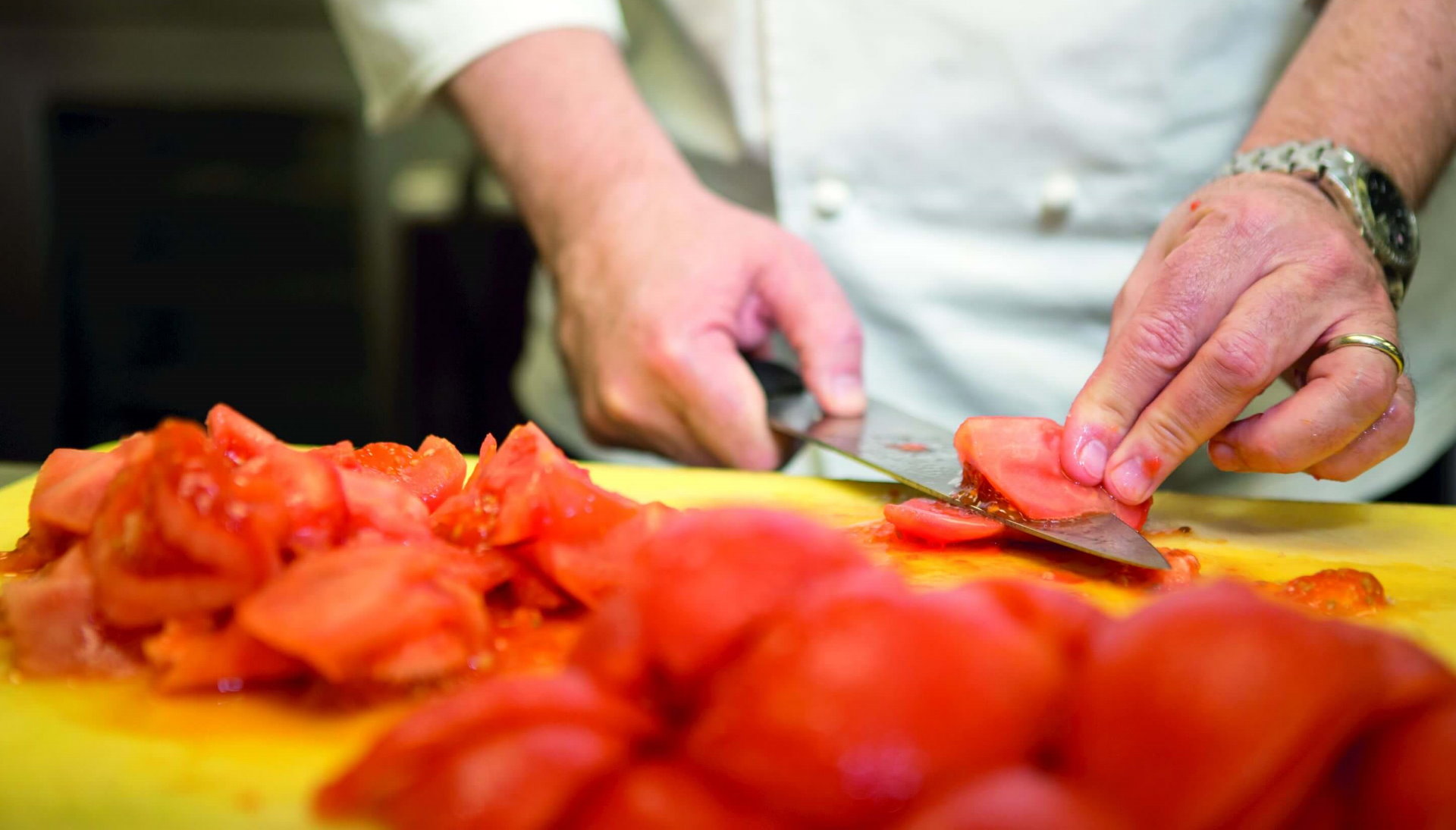Pastry chef Sharon Anderson shocked the fine dining world, by suing Heston Blumenthal and his Fat Duck restaurant group for £200,000, because she claims that tasks he gave her left her with chronic wrist pain, leading to injury, loss of work and bouts of depression.
Three-Michelin-star chef Blumenthal denies all wrongdoing, claiming that her tasks were no more arduous than any to be found in another fine-dining establishment. The case is due to resume this year.
It is easy to see why the repetitive nature of the work in kitchens could easily place strains upon the human body but opinions from chefs and kitchen workers vary about the impact and the measures that can be taken to lessen any pressures.
“Rightly or wrongly when you enter the kitchen as a chef, particularly in a high-end restaurant, there is an acceptance that you sign away some of your rights,” says Katayun Sethna, who worked as a sous chef for British chef Gordon Ramsay. “You are going to get burnt, you’re going to work long, exhausting hours and you’re going to do some fiddly, repetitive tasks. There’s no point pretending that this isn’t the case.”
Despite the fact there is more automation and some pressures have eased in the last decade, Sethna still believes the work can be grinding and uncomfortable. “Kitchens are changing,” she explains. “They are a lot nicer than they used to be. But I still think you are going to work harder than in many other professions and probably in more dangerous conditions.
“It’s still a great job, despite that. Because when you’re working hard in a team doing service and it all comes together, it’s the greatest feeling.”
In terms of strain placed on employees, the culture comes from the top and recent moves away from a more macho chef style has meant that life is better for most kitchen workers.
“The worst problems come in when you can’t say anything,” explains Sethna. “If you have a boss who is too busy to listen to you, and you have no time for any rest and you’re in pain, then you’re probably going to carry on doing a task which puts you in pain, or worse, in danger.
“And then the more tired you get physically, the more mistakes you make and you end up in a vicious cycle. When I worked in my early days in a big busy kitchen, I used to have cuts all over my arms. It was a mess simply because I was just exhausted.”
Matthew Merritt-Harrison FCSI, managing partner of Merritt-Harrison Catering Consultancy and chair of FCSI UK & Ireland, agrees that the top hierarchy of the kitchen, play a key role in setting the agenda to make the workplaces a safe environment.

Matthew Merritt-Harrison | Image: FCSI
“You have to have the freedom to raise potential issues without feeling like you’re causing problems,” he says. “A culture that is health-and-safety focused is bound to be better and spot potential accident issues.
“I remember going to an operator who was upset about having to declare an accident. They always wanted the zero accidents statistic, so they’d rather try cover up an accident. It’s just a statistic, it’s not as important as actual health.
“On the other hand, when it comes to lawsuits, supermarkets field lots of claims from people who have slipped on grapes every week. So insurance companies are aware of risk and it’s clear that prevention is the best way. Employers should stick to good practices, keep up with training and look at things with fresh eyes, maybe with the assistance of an FCSI consultant.”
There may be the issue that employers in kitchens have a tendency to see health and safety as a box-ticking exercise, according to Spanish/German chef Phil Walther who has worked in kitchens from Mexico City to the wilds of Fäviken in Sweden. “There are forms to fill in and posters put up all around the place, but sometimes I’m sure that, in most cases, employers hope people are using their common sense,” he says. “The thing is everything in a kitchen takes time and resources and it depends how much time and money a business can spend on one thing. A small, new restaurant is going to have low margins anyhow.
“There are terrible things that happen in kitchens, bullying, sexism and racism. To be honest, in my view, a lack of focus on health and safety matters is low down the list of poor practice. It’s not my main ethical concern and I think most people who work in kitchens would agree.
“I can understand that RSI is painful but, you are going to end up working at repetitive jobs. There’s no avoiding it. The problem is, the better you are at doing a particular task, the more likely you’re going to be the one doing it for long stretches. It’s just easier than giving it to someone less proficient. That’s been the same in almost every place I have worked all over the world. Except, actually in Fäviken, where you are given your dishes to focus on and you have to keep at them. That has its own problems because you aren’t allowed to help anyone no matter how deep in the weeds they get.
“Either way, I’m not surprised there are lawsuits about kitchens, I’m just not convinced that people who work in kitchens are going to appreciate them or any resulting changes to work practices.”
Despite this, and the evident risk factors restaurants or big kitchens can expect to be held responsible for their actions just as in any other industry.
“Throughout Europe, employers must do their best to ensure the safety of their employees, that’s the law,” explains solicitor Fiona Bootle. “They can’t remove all danger, particularly in a kitchen, but if there are dangers they have to make sure employees are aware of them. That means a lot of risk assessment and training, both for equipment, buildings and general management.
“It’s not just the obvious, such as fire risk and having non-slippery floors, there also needs to be health surveillance where appropriate – for example on tasks where repetitive strain and musculoskeletal risks are possible. This isn’t ‘health and safety gone mad’, it’s just protecting workers when they need it.”
There certainly has to be a balance according to Matthew Merritt-Harrison.
“There are questions of resources,” he explains. “There is always time pressure on a kitchen. And when you have time pressure in a workplace which contains fire, boiling water and toxic cleaning chemicals, the chances increase of having big issues. You must do what you can to mitigate them, but you can’t remove risk from the world completely. You just have to do the best you can.”
















